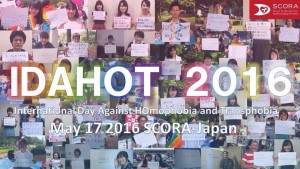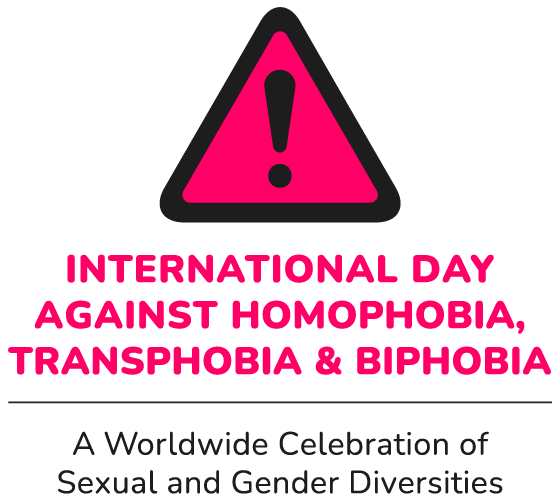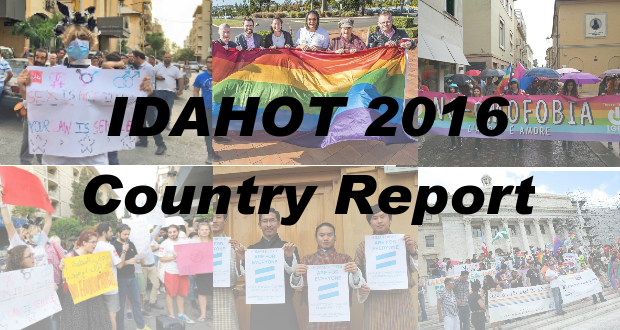For detailed coverage of IDAHOT2016 activities, and to access pictures and videos, please visit our Facebook page and Twitter account
As the final lights of day set on May 17th, it is time to look back on what this hugely exciting edition of the International Day Against Homophobia, Transphobia and Biphobia (IDAHOT) brought us.
One of the major features this year is the huge visibility of politicians and officials during the Day.
Never have so many heads of States, Ministers, MPs and elected officials supported the day through announcing actions, meeting activists, making declarations, flying the rainbow flag or lighting official buildings in Rainbow colors. In Mexico, President Pena Nieto met with LGBT advocates and announced his plans towards legalising same-sex marriage; in Canada, PM Justin Trudeau announced measures towards full equality for Transgender people. US President Obama and Secretary of State Kerry are among the many US officials who made statements. In the UK, PM Cameron delivered a speech for IDAHOT. In Chile, President Bachelet lit the Presidential Building in Rainbow Colors. London’s new major Sadiq Khan raised the Rainbow Flag over City Hall. Brisbane’s city bridge lit up in Rainbow colors too, while regional authorities pledged their support for Same-Sex Marriage. And these are just some amongst many actions that took place.
 Embassies around the world have raised the rainbow flag to show support to local activists, and have supported countless local actions. The USA, the UK and the Netherlands have been at the forefront of this.
Embassies around the world have raised the rainbow flag to show support to local activists, and have supported countless local actions. The USA, the UK and the Netherlands have been at the forefront of this.
International institutions have also been hugely engaged. In Europe, all EU institutions and the Council of Europe have engaged in various ways, mainly through the now traditional “IDAHO Forum” which brings EU stakeholders together to discuss cooperation and regional politics. This year the Forum was hosted by the Danish government and opened by Crown Princess Mary.
The United Nations have also been particularly visible. Like each year, many UN agencies have made special IDAHOT declarations reaffirming their commitment to fight against discrimination based on sexuality and gender orientation or expression. UNESCO brought together Ministers and civil society representatives from across the world for a two-day IDAHOT conference on combatting violence against LGBT schoolchildren and students.
And the Office of the High Commissioner for Human Rights released a groundbreaking “Why we fight” video already seen by almost half a million people.

Other public institutions at local levels have also massively marked the Day, with municipalities, schools, police forces, fire brigades, hospitals, being particularly visible.
The IDAHOT is definitely becoming a favorite moment of action for institutions to show their support!
Companies and corporations have also been highly visible. For the first time, Google mentioned IDAHOT on the home page of their search engine, drawing the attention of millions of people! Many other companies mobilised, from internal staff events all the way to huge partnerships with LGBT organisations.
But the Day belongs foremost, of course, to activists. All over the world they have shown their creativity once more, with bicycle (P)rides, Flashmobs, beauty pageants, human flags, kiss-ins, concerts, vigils and prayers, and many more, including a ‘Tango against homophobia and transphobia”, in Argentina of course!
The global focus issue of IDAHOT 2016, Mental Health and Well Being, was part of many of these events (see our special report here)

Three countries, Bhutan, Brunei and Vanuatu saw their IDAHOT action for the first time, bringing the total number of countries where IDAHOT actions have been registered to an amazing 132, which is probably the best proof that sexual and gender diversities know no borders!
But this year specifically, we saw the “fault-line” deepening between places where activism is increasing and those where it is repression that is on the rise.
In the republic of Georgia, where right wing fundamentalists had thwarted IDAHOT mobilisation by organising on this day a “World Congress of Families”, activists who staged a non-violent silent protest action were arrested by authorities (and have fortunately been released since then). Several IDAHOT events had to be cancelled under pressure and this year about 15% of IDAHOT initiatives were not announced in advance for fear of triggering hostility. This is much more than in previous years, which clearly signals that opposition to sexual and gender diversity is getting fiercer everywhere.
Nevertheless, activists by and large managed to stage their actions. In Jordan or Brunei, community events happened peacefully and successfully; in Russia, rainbow colored balloons flew over Saint Petersburg rooftops; activists in Ukraine shot a wonderful video; actions took place in China, Tunisia and, via online campaigns, even in Egypt, Sudan and other places where activists face huge social and police pressure.
With just a little support, solidarity and sometimes protection, sexual and gender minorities can truly unleash their fantastic transformation power. Not just to access their own fundamental basic human rights but, as increasing support from straight allies shows, for the benefit of everyone in more inclusive, happy, diverse and respectful societies.
More events are still lined up, as the IDAHOT has now firmly become in many places at least a whole week of action.
As an instrument for a better future, the International Day Against Homophobia, Transphobia and Biphobia truly deserves everybody’s engagement!
© Copyright 2024 All Rights Reserved - Privacy Policy

